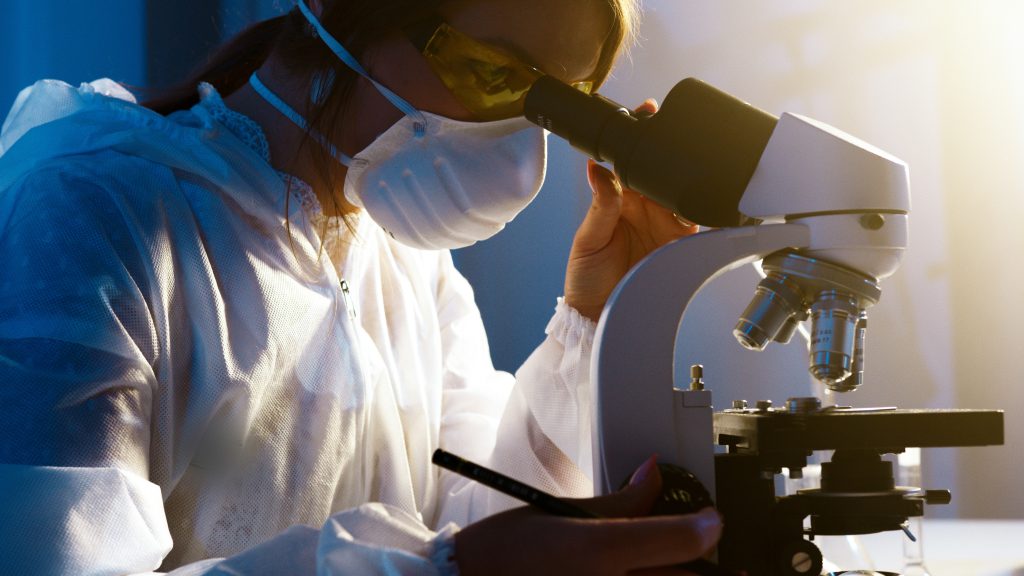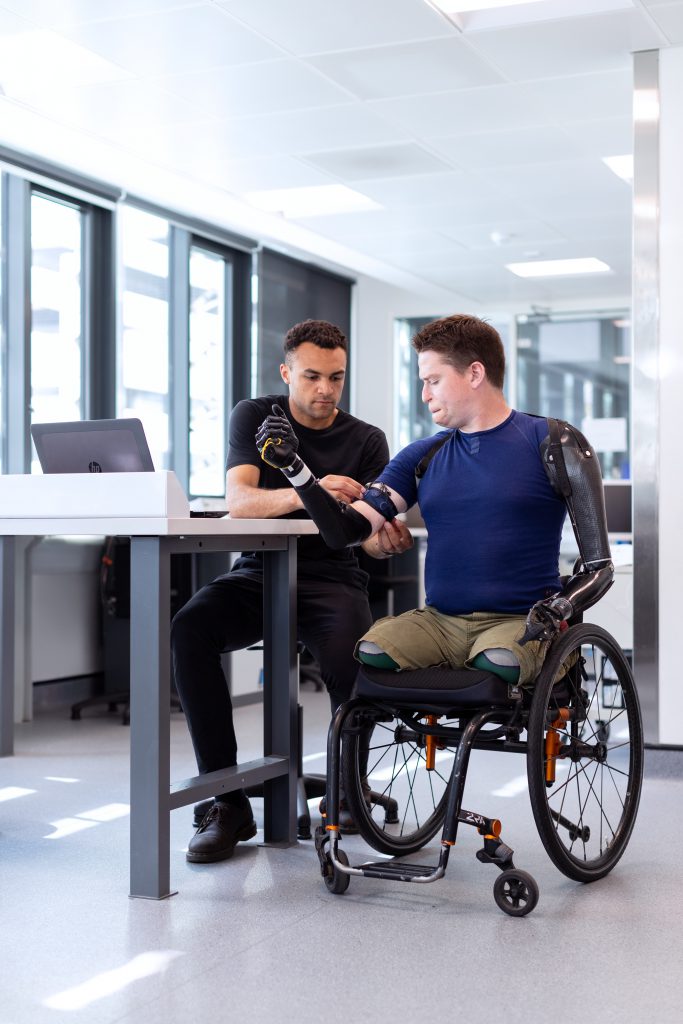General Introduction
Unlike humans, robots cannot reach the same high level as they are programmed to do certain tasks according to certain factors. Robots cannot change their plans like humans or plan new things unless the programmer programs them to change the plan (Critchlow 1985). In today’s world, robotics has gained much limelight and of its application widely acclaimed in the health sector is Robot Assisted Surgery (RAS).
If a doctor tells you that you need surgery, one may feel anxious and concerned. One probably gets worried about whether the surgery will be successful, how much discomfort one may have and how much time one will miss from work. The good news is that with advances in surgical technology, a very different surgery experience can be faced. Robotic surgery is currently carried out with the use of the da Vinci surgical system, a unique set of technologies that include specialized “arms” for holding instruments and a camera, as well as a magnified screen and a console (stand/support).
This technology helps overcome the obstacles faced by surgeons during the process of surgery. It provides the surgeon with a greater range of motion and accuracy, which may lead to less bleeding and post-operative pain.
Technical Information
This system consists of four robotic arms of which three are instrumental and one is the endoscope. Trocars are attached at the end of each arm, which are inserted into patient through small incisions. The surgeon can manipulate these arms by cabled ‘endowrist’ instruments, which mimic the freedom of human hand and wrist motion, only by sitting at a console away from the operation bed. The wristed robotic instruments, along with the articulations of the robotic arms, allow the surgeon seven degrees of freedom: the external robotic arms provide three degrees of freedom (insertion, pitch, and yaw) and the Endowrist mechanism provides four additional degrees of freedom (pitch, yaw rotation and grip) (Chen and Falcoln, 2019). The console’s monitor provides a three-dimensional view of the surgical field and by using pedals the focus can be adjusted. This way the surgeon does not need to take his hands off the console to manually adjust the focus.
Laparo-endoscopic single-site surgery (LESS) robots insert the camera and multiple instruments through one incision, preferably the umbilical, during which case there is no scar. Smaller systems just like the SurgiBot-SPIDER (Single-Port Instrument Delivery Extended Research) system allows robotic surgery at a significantly lesser cost, but haven’t yet gained FDA approval. Newer robots are constructed of sentimental, flexible and deformable materials. The utilization of biocompatible soft materials, super elastic materials and 3D-printed soft plastics like silicon elastomers, leave greater safety. These allow changes in robotic shape and mechanical properties in response to the touch, thus enhancing their greater intrinsic safety. Newer robots also allow elongation to tune the precise position of the robot, and greater flexibility of the instrument neck (John & Blyth 2021).

Tissue property modeling offers haptic feedback. Bendability and stiffness controllability are key aspects of the newer robotic surgical systems emerging today. Newer flexible robots sense the force applied by shape reconstruction, with the stiffness of the advancing tip being controlled by the strain. This enables active adjustment of the payload (Gifari et al. 2019)
Photo by Artem Podrez from Pexels
Historical Information
In 1985 robots were first used to help specialists during a neurosurgical activity for taking a CT guided biopsy. It didn’t take well before further developed types of robots were produced for urological systems. These could be utilized to direct transurethral resection of the prostate through three-dimensional pictures made preoperatively. Before long an update called ROBODOC worked with muscular activities like complete hip substitution. ROBODOC was intended to move the femur with more prominent exactness in hip substitution medical procedures. Because of cooperation between Scientists from the National Aeronautics and Space Administration (NASA) and the Stanford Research Institute, significant advances were made towards the correspondence between the administrator and the mechanical instruments. Together, they had the option to improve the tele control by the specialist. This accomplishment further progressed the insignificantly obtrusive laparoscopic medical procedure and prompted the improvement of tele medical procedures. This idea was at first financed by the Pentagon’s Defense Advanced Research Projects Agency (DARPA), determined to permit a specialist to treat an injured officer on the war zone, from a far off place of refuge with the specialist’s hands controlling mechanical arms (Mafi, Mafi & Malahias 2016). Robots can now be categorised as automated weapons, handheld robots, mills, or telerobotic devices, depending on their characterization. They may also be active, semiactive, or inactive in nature. Active computers are fully programmable and capable of performing tasks on their own.
Semiactive and passive robotic systems work by converting the operator’s hand movements into controlled or unpowered movements of the robot end-effector limbs. (Ivan De Backer 2020).

Tissue property modeling offers haptic feedback. Bendability and stiffness controllability are key aspects of the newer robotic surgical systems emerging today. Newer flexible robots sense the force applied by shape reconstruction, with the stiffness of the advancing tip being controlled by the strain. This enables active adjustment of the payload (Gifari et al. 2019)
Photo by ThisIsEngineering from Pexels
Nanobots are currently being researched for their ability to unclog arteries. Catheter-based robots, robot-based valves, better operative techniques, smaller instruments, improved holographic 3D vision, nanotechnology, and faster and smaller computer circuits that allow faster data transmission are among the other developments in cardiovascular surgery. (‘Surgical Robots Market – Growth, Trends, COVID-19 Impact’, 2021.).
Impact of Technology
Robotic surgery, also known as robot-assisted surgery, enables doctors to perform a wide range of complex procedures with greater precision, versatility, and control than traditional methods. Robotic surgery, which began as a way to conduct vital procedures on the battlefield, has progressed to new heights in recent decades. Robotic surgeries are becoming one of the most advanced techniques available to a surgeon in the modern world, allowing for accurate, tremor-free surgery with the added advantage of a minimally invasive approach (Ruurda, Van Vroonhoven & Broeders 2002) .
Robotic surgery is increasingly spreading through a wide variety of traditional general surgical procedures, according to the study done by Sheetz, Claflin & Dimick (2020). Trends toward greater use of the robotic platform started to emerge quickly after hospitals began practicing robotic surgery, and they were linked to a decline in the use of well-established minimally invasive techniques including laparoscopic surgery. This pattern was seen across a wide range of procedures, including those for which traditional laparoscopic surgery is already considered standard of care and for which robotic surgery has no theoretical clinical value. These results illustrate the importance of continuing to track robotic surgery adoption to ensure that excitement for a new technology does not outpace the evidence required to use it in the most appropriate clinical settings.
When it comes to robot-assisted surgery, there’s not just the chance of human error, but also the possibility of mechanical failure. System components like robotic arms, cameras, robotic towers, binocular lenses, and instruments, for example, can malfunction. In certain situations, the electrical current in the robotic instrument will escape the robotic arm and be applied to nearby tissues, causing burn injuries. Similarly, due to excessive body positioning or direct nerve compression that can occur while using robots, robot-assisted surgery can trigger nerve palsies. In surgical centres with lower robotic volume or by less skilled surgeons, robotic surgery often takes longer than non-robotic surgery (‘Advantages and Disadvantages of Robotic Technology in Urology | Advanced Urology Institute’ 2018).
Overall, this technology has a promising future and is considered a disruptive technology as it will very soon replace major hand done surgeries and operations and is continuing to improve gradually.
Future Advancements
According to the American Association of Medical Colleges, it is expected that there may be a shortage of around 65,000 primary care physicians in the United States by 2025. Doctors and the nursing staff are already experiencing several issues due to heavy patient load. Thus the usage of robotics is expected to witness robust demand.
The global surgical robotics market is expected to expand at a rapid pace over the forecast period, owing to rising chronic disease prevalence, an ageing global population, improved reimbursement policies, and public initiatives and funding to develop technologically advanced devices. With the introduction of technical advances and developments in minimally invasive surgical procedures, the increasing demand for surgical robotic systems is expected to continue in the future (‘Surgical Robots Market – Growth, Trends, COVID-19 Impact’, 2021).
Future robotic surgery systems will enable surgeons to feel a patient’s body tissue from afar, and this technology will be widely adopted in many countries around the world. In medical facilities that perform robotic surgeries, touchscreen solutions will become more commonly used. The next generation of robotic surgery technology would be safer, more affordable, and capable of performing a wide range of procedures (‘Why robotic surgery is a healthcare IT trend to watch out for’ 2021.).
References
‘Advantages and Disadvantages of Robotic Technology in Urology | Advanced Urology Institute’ 2018, retrieved May 7, 2021, from <https://www.advancedurologyinstitute.com/advantages-disadvantages-robotic-technology-urology/>.
Chen CC, Falcone T. Robotic gynecologic surgery: past, present, and future. Clinical Obstetrics and Gynecology. 2019 Sep;52(3):335-343. DOI: 10.1097/grf.0b013e3181b08adf.
Critchlow, AK 1985, ‘Introduction to robotics.’, , no. March 2015.
Gifari, MW, Naghibi, H, Stramigioli, S & Abayazid, M 2019, ‘A review on recent advances in soft surgical robots for endoscopic applications’, International Journal of Medical Robotics and Computer Assisted Surgery, vol. 15, no. 5.
Ivan De Backer 2020, Innovations in Robotic Surgery 2020-2030: Technologies, Players & Markets, retrieved May 7, 2021, from <https://www.idtechex.com/en/research-report/innovations-in-robotic-surgery-2020-2030-technologies-players-and-markets/724>.
John, M & Blyth, G 2021, ‘Robotic Assisted Surgery in Bicompartmental Knee Replacement’, no. March.
Mafi, R, Mafi, P & Malahias, M 2016, ‘The Use of Robotic Assisted Surgery; the Current and Future Challenges’, Open Medicine Journal, vol. 3, no. 1, pp. 300–304.
Ruurda, JP, Van Vroonhoven, TJMV & Broeders, IAMJ 2002, ‘Robot-assisted surgical systems: A new era in laparoscopic surgery’, Annals of the Royal College of Surgeons of England, vol. 84, no. 4, pp. 223–226.
Sheetz, KH, Claflin, J & Dimick, JB 2020, ‘Trends in the Adoption of Robotic Surgery for Common Surgical Procedures’, JAMA Network Open, vol. 3, no. 1.
‘Surgical Robots Market – Growth, Trends, COVID-19 Impact’, retrieved May 7, 2021, from <https://www.globenewswire.com/fr/news-release/2021/03/05/2188062/0/en/Surgical-Robots-Market-Growth-Trends-COVID-19-Impact-and-Forecasts-2021-2026.html>.
‘Why robotic surgery is a healthcare IT trend to watch out for’, retrieved May 7, 2021, from <https://www.cloudsecuretech.com/why-robotic-surgery-is-a-healthcare-it-trend-to-watch-out-for/>.

